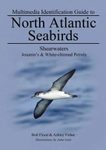Monograph
By: Mike P Harris and Sarah Wanless
256 pages, 44 colour photos, b/w photos, b/w illustrations, b/w distribution maps
![The Puffin The Puffin]()
Click to have a closer look
About this book
Customer reviews
Biography
Related titles
About this book
With its colourful beak and fast, whirring flight, the Atlantic Puffin is the most recognisable and popular of all North Atlantic seabirds. Puffins spend most of the year at sea, but for a few months of the year the come to shore, nesting in burrows on steep cliffs or on inaccessible islands. Awe-inspiring numbers of these birds can sometimes be seen bobbing on the sea or flying in vast wheels over the colony, bringing fish in their beaks back to the chicks. However, the species has declined sharply over the last decade; this is due to a collapse in fish stocks caused by overfishing and global warming, combined with an exponential increase in Pipefish (which can kill the chicks).
"The Puffin" is a revised and expanded second edition of Poyser's 1984 title on these endearing birds, widely considered to be a Poyser classic. It includes sections on their affinities, nesting and incubation, movements, foraging ecology, survivorship, predation, and research methodology; particular attention is paid to conservation, with the species considered an important 'indicator' of the health of our coasts.
Customer Reviews
Biography
Mike Harris is one of the best-known seabird biologists in Britain today. Formerly a warden on Skokholm Island, his research on auks and other species has led to ecological research in places such as the Isle of May, St Kilda and the Galapagos Islands. His successful career was acknowledged by the award of the prestigious BOU Godman-Salvin Medal for distinguished ornithological work in 2006.
Monograph
By: Mike P Harris and Sarah Wanless
256 pages, 44 colour photos, b/w photos, b/w illustrations, b/w distribution maps
Customer Reviews:
The Puffin
by Keith Betton in the United Kingdom (24/01/2012)
A lot has happened since the first edition of this book appeared in 1984. That early Poyser volume brought together what was known about the Puffin up to the early 1980s. Since then much more has been discovered about many aspects of the bird's biology. Some of that new information has come from the Isle of May, where Mike Harris started his work on Puffins in the 1970s (and where Sarah Wanless has kept these studies going). Other data have been incorporated from elsewhere in Europe and North America.
While the book covers all of the main areas discussed in the first version, in many ways it feels completely new. The main chapters cover subjects such as appearance, development and moult, distribution and status, colony attendance and incubation, chick rearing and breeding success, behaviour, food and feeding, predators, parasites and competitors. Throughout there are attractive line drawings by Keith Brockie. There are many tables and appendices – not least around 500 references (most of them post-1984).
What becomes clear throughout the book is the fact that Puffins are challenging birds to study. They often live in remote places and disappear underground for much of the breeding season. When the first version of this book was written it was not known where Puffins hunted for fish or how they caught them, and once the birds left their colonies their winter travels were mostly a mystery. Modern data tracking devices have allowed researchers to discover a huge amount, and the book reflects this.
This is a good book by experts in their field. Back in 1984 this book was good value at £12.60. Today it costs £50.00. While I think that these Poyser monographs are great studies and are worth collecting I don't see them as good value now – and I fear this will deter some customers.














































